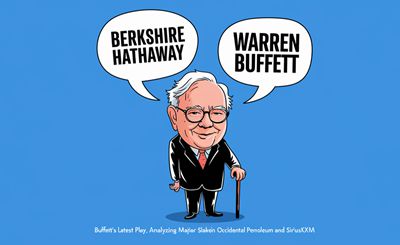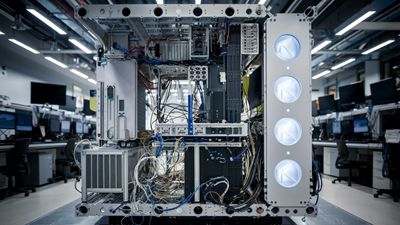Uber Stock Hits Record High: How Tesla’s Robotaxi Rollout Boosted Its Rival
The Tesla Robotaxi Event: A “Toothless” Reveal
Tesla’s robotaxi event was billed as a game-changer, with expectations running high for a detailed rollout plan that could potentially disrupt the ridesharing market. However, the event fell short of expectations, leaving investors with more questions than answers. Analysts described the presentation as “toothless,” noting the absence of concrete details regarding production timelines, regulatory approvals, and the economic viability of Tesla’s autonomous vehicle strategy.
Key Takeaways from the Event
- Lack of Specifics: Tesla’s CEO, Elon Musk, unveiled the “Cybercab,” a prototype for a fully autonomous vehicle priced under $30,000. However, the lack of specifics on production timelines and regulatory hurdles left investors skeptical about the feasibility of the project.
- Regulatory Challenges: The ambitious design of the Cybercab, which lacks traditional controls like a steering wheel and pedals, is expected to face significant regulatory scrutiny. This adds another layer of uncertainty to Tesla’s autonomous vehicle ambitions.
- Market Reaction: The underwhelming nature of the event led to a decline in Tesla’s stock, which fell by over 8%, further exacerbating its underperformance compared to major indices like the S&P 500 and Nasdaq.
Uber’s Strategic Positioning: A Winning Formula
In contrast to Tesla’s struggles, Uber has been strategically positioning itself to capitalize on the evolving landscape of autonomous vehicles. The company’s proactive approach and strategic partnerships have bolstered investor confidence, contributing to its recent stock surge.
Factors Driving Uber’s Stock Surge
- Strategic Partnerships: Uber’s collaborations with autonomous vehicle leaders like Waymo and Cruise have positioned it as a key player in the AV ecosystem. These partnerships are expected to drive demand and enhance utilization for AV technology providers, offering Uber a competitive edge.
- Market Confidence: Analysts have maintained a positive outlook on Uber, with Jefferies’ John Colantuoni describing the Tesla event as a “best-case outcome for Uber.” The lack of immediate competition from Tesla’s robotaxi has allowed investors to refocus on Uber’s fundamentals and growth prospects.
- Stock Performance: Uber’s shares have risen nearly 38% for the year, reflecting strong investor sentiment and confidence in the company’s strategic direction. The recent surge to a 52-week high underscores the market’s optimism about Uber’s future.
The Broader Implications for the Ridesharing Market
The contrasting fortunes of Uber and Tesla highlight the complexities and uncertainties inherent in the ridesharing and autonomous vehicle sectors. As these industries continue to evolve, several key themes are emerging that could shape the future landscape.
The Competitive Landscape
- Partnerships vs. In-House Development: Uber’s strategy of partnering with established AV developers contrasts with Tesla’s in-house approach. This divergence highlights the importance of collaboration in navigating the regulatory and technological challenges of autonomous vehicles.
- Market Expansion: The potential expansion of the total addressable market (TAM) for ridesharing companies through autonomous vehicles presents both opportunities and challenges. While AVs could increase supply and drive down prices, they also require significant investment and regulatory approval.
Investor Sentiment and Market Dynamics
- Volatility and Opportunity: The ridesharing market is characterized by volatility, with stock prices reacting sharply to developments in autonomous vehicle technology. Investors are advised to brace for potential impacts and consider opportunistic buying in response to market fluctuations.
- Long-Term Growth Prospects: Despite the short-term volatility, the long-term growth prospects for ridesharing companies remain robust. Analysts expect Uber to achieve mid-to-high teens growth for gross bookings over the next three years, reflecting confidence in its business strategy.
Conclusion: Navigating the Future of Ridesharing
The recent developments in the ridesharing market underscore the dynamic and rapidly evolving nature of the industry. As Uber continues to capitalize on its strategic partnerships and market positioning, it remains well-positioned to navigate the challenges and opportunities of the autonomous vehicle era. For investors, the key takeaway is the importance of staying informed and adaptable in a market characterized by innovation and disruption.
As we look to the future, the interplay between traditional ridesharing companies and emerging autonomous vehicle technologies will be a critical area to watch. Whether through strategic partnerships, technological advancements, or regulatory breakthroughs, the companies that can effectively navigate this landscape will be best positioned to thrive in the years ahead.
In the meantime, investors should keep a close eye on developments in the autonomous vehicle sector, as these will undoubtedly shape the future trajectory of the ridesharing market. By staying informed and proactive, investors can position themselves to capitalize on the opportunities and challenges that lie ahead.


